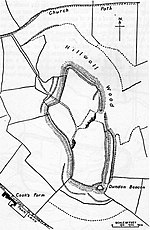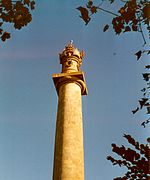Compton Dundon
Civil parishes in SomersetHill forts in SomersetUse British English from August 2012Villages in South Somerset

Compton Dundon is a village and civil parish in Somerset, England, lying beside King's Sedgemoor and the Polden Hills, 5 miles (8 km) south of Glastonbury and 4 miles (6 km) north of Somerton in the South Somerset district. The village has a population of 705. The parish includes the small village of Dundon and the hamlet of Littleton.
Excerpt from the Wikipedia article Compton Dundon (License: CC BY-SA 3.0, Authors, Images).Compton Dundon
Ham Lane,
Geographical coordinates (GPS) Address Nearby Places Show on map
Geographical coordinates (GPS)
| Latitude | Longitude |
|---|---|
| N 51.0918 ° | E -2.7323 ° |
Address
Ham Lane
Ham Lane
TA11 6PQ , Compton Dundon
England, United Kingdom
Open on Google Maps






